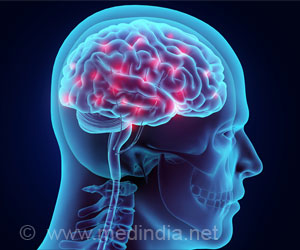Scientists at the University of Alabama at Birmingham, including a researcher of Indian origin, say that a rehabilitation therapy developed by them can produce changes in the structure of the brain.
Scientists at the University of Alabama at Birmingham, including a researcher of Indian origin, say that a rehabilitation therapy developed by them can produce changes in the structure of the brain.
Analysing MRI images of stroke patients, the researchers noted that Constraint Induced (CI) therapy produced a significant increase in the amount of grey matter present in the brains of patients receiving the therapy.Dr. Edward Taub, who developed the therapy, says that this is the first representation that a rehabilitation therapy can produce structural changes within the human brain after injury.
He says that the findings published in the journal Stroke also provide further proof of neuroplasticity, the brain's ability to remodel itself following traumatic injury.
"This changes all of our perspectives about what is possible in the brain. For years, science thought the adult brain was hardwired, with no ability to change or adapt. Now we have further proof of the concept of neuroplasticity, the brain's remarkable ability to respond to damage to compensate for the injury," said Taub.
Lynne Gauthier, a graduate student working in Taub's lab, took MRI images of 16 stroke patients who received CI therapy, and 20 controls who received a comparison therapy.
Upon measuring the amount of grey matter in the outer layers of the brain and the hippocampus, a structure deep in the brain involved in learning and memory, Gauthier observed that the CI therapy group showed an increase in the amount of grey matter in areas of the brain responsible for motor skills while the comparison group had no increase.
Advertisement
"Interestingly, the patients who demonstrated the greatest improvement in use of the affected arm also showed the greatest increase in the amount of grey matter," Gauthier said.
He added: "Coupling CI therapy with other factors affecting neuroplasticity, such as pharmacologic agents or electrical stimulation, may lead to exciting new avenues for research into a host of neurological diseases and developmental disabilities."
Although the research team has yet to discern what causes the increase in grey matter, Taub says that it may be due to an increase in the amount of blood vessels in the brain, or in the number of synaptic connections established between neurons.
The researchers believe that the increase in the grey matter may also reflect an increase in the amount of glial cells in the brain.
However, the most intriguing possibility is that the brain is actually creating more neurons.
"The idea that the brain can make new neurons in adulthood...neurogenesis...has only been accepted by the scientific community in the past several years," said Dr. Gitendra Uswatte, associate professor of psychology and a study co-author.
"These findings open the door to the possibility that the brain can indeed recover from traumatic injury by creating new brain cells to replace those lost by injury," Uswatte added.
Source-ANI
SRM/M







